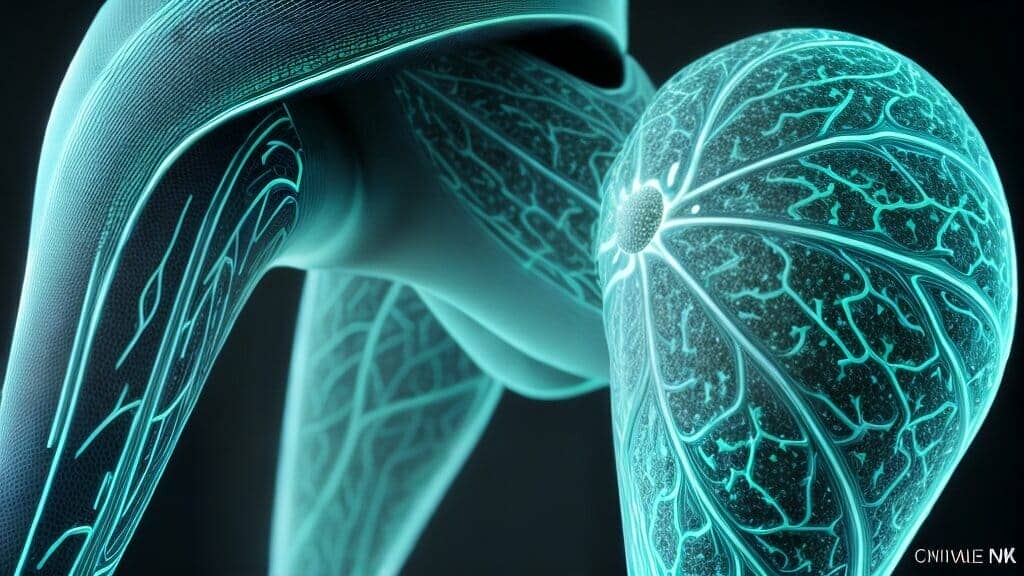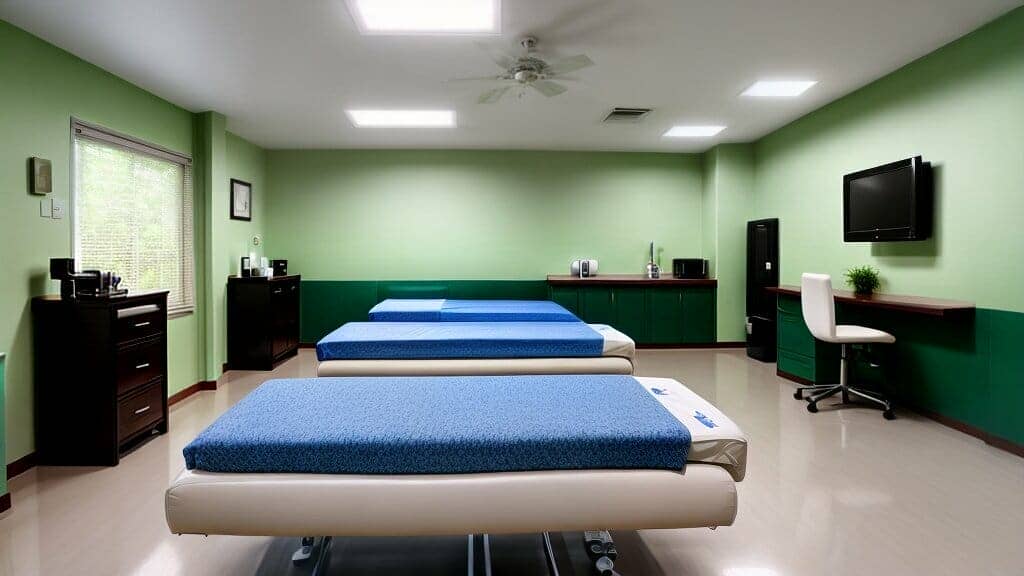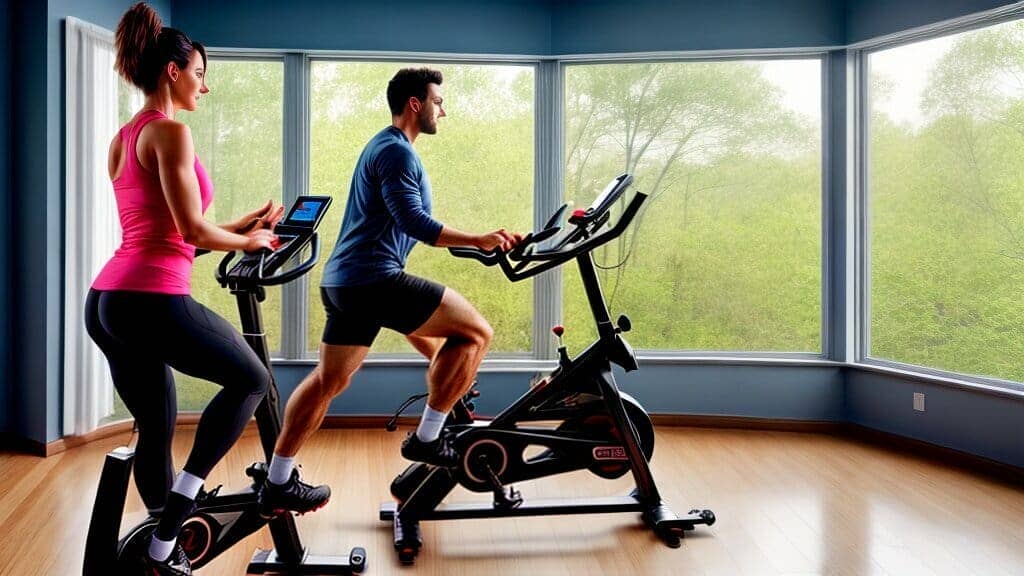Lyme Disease is a complex and debilitating condition that affects thousands of individuals each year. While traditional treatments such as antibiotics can be effective, physical therapy is emerging as a promising option for managing symptoms and promoting recovery. In this article, we will explore the benefits of Lyme Disease physical therapy and how it can support individuals in their journey towards healing.
Key Takeaways:
- Lyme Disease physical therapy can help manage symptoms and improve overall quality of life for patients
- Specialized physical therapy methods are tailored to address the unique needs and challenges of Lyme Disease rehabilitation
- Physical therapy can support long-term healing and ongoing care for individuals with Lyme Disease
Understanding Lyme Disease and Its Symptoms
Lyme Disease is a bacterial infection caused by the bite of an infected black-legged tick. It is commonly found in North America, Europe, and Asia. The disease is named after the town of Lyme, Connecticut, where it was first identified in 1975. Lyme Disease has a variety of symptoms that can range from mild to severe.
The most common symptom of Lyme Disease is a distinct rash that appears in the shape of a bull’s eye. The rash is often accompanied by flu-like symptoms such as fever, fatigue, and headache. Other symptoms can include joint pain, muscle weakness, and neurological problems.
| Early-Stage Lyme Disease | Late-Stage Lyme Disease |
|---|---|
|
|
Lyme Disease can be difficult to diagnose due to its wide range of symptoms and the fact that not all patients develop the characteristic bull’s eye rash. Testing for Lyme Disease can also be unreliable, leading to misdiagnosis and delayed treatment.
“Lyme Disease can have serious long-term consequences if left untreated, including chronic joint pain, neurological problems, and heart rhythm abnormalities.” – Centers for Disease Control and Prevention (CDC)
If you suspect you have been bitten by an infected tick and are experiencing any symptoms of Lyme Disease, it is important to seek medical attention promptly.

The Role of Physical Therapy in Lyme Disease Treatment
Physical therapy plays a critical role in the treatment and recovery of individuals with Lyme Disease. It can help manage symptoms, improve mobility, and enhance overall quality of life for patients.
Physical therapists work closely with medical professionals to design individualized treatment plans, addressing each patient’s unique needs and challenges. These plans can include exercises to improve joint and muscle function, pain management techniques, and education on lifestyle modifications to support healing.
| Benefits of Physical Therapy for Lyme Disease: |
|---|
| Alleviates pain: targeting the affected areas with physical therapy exercises can help to alleviate pain and discomfort, making daily life more manageable for patients. |
| Improves mobility: physical therapy can help increase range of motion and improve mobility, which is often affected in individuals with Lyme Disease. This can increase independence and improve quality of life. |
| Enhances circulation: specific exercises and massage techniques that address circulation issues can help increase blood flow, reducing inflammation and promoting healing. |
Overall, physical therapy is a critical component of Lyme Disease treatment. It can help patients manage symptoms, improve physical capabilities, and support long-term healing and rehabilitation.

Benefits of Physical Therapy for Lyme Disease
Physical therapy can be an effective treatment option for individuals with Lyme Disease. In addition to managing symptoms, targeted exercises and pain management techniques can support the healing process and enhance overall quality of life.
Improving Mobility
A major benefit of physical therapy for Lyme Disease is improved mobility. At Oasis Medical Institute, physical therapists work with patients to develop personalized exercise plans that address their unique needs and challenges. This may include stretching, range-of-motion exercises, and balance training. Through consistent practice, patients may experience increased flexibility, strength, and endurance, allowing them to engage in daily activities with greater ease and comfort.

Pain Management
Pain is a common symptom of Lyme Disease, and physical therapy can be an effective way to manage it. Physical therapists at Oasis Medical Institute use a variety of pain management techniques, such as heat and cold therapy, massage, and targeted exercises, to help patients effectively manage pain and discomfort. By reducing pain and inflammation, physical therapy can also improve overall physical functioning and support the healing process.
Muscle Strength and Endurance
Lyme Disease can cause muscle weakness and fatigue, making it difficult to engage in daily activities. Physical therapy can help patients rebuild muscle strength and endurance, improving their ability to perform daily tasks and maintain an active lifestyle. Through personalized exercise plans and targeted techniques, physical therapists at Oasis Medical Institute can help patients build and maintain muscle mass while also reducing the risk of future injury.
Benefits of Physical Therapy for Lyme Disease
“Physical therapy has been a game-changer for my Lyme Disease recovery. The exercises and techniques I’ve learned have helped me manage my pain and improve my overall physical capabilities. I’m so grateful for the support I’ve received from my physical therapist at Oasis Medical Institute.” – Sarah, Lyme Disease patient
Physical therapy is an essential part of Lyme Disease treatment and can offer numerous benefits for patients seeking to manage symptoms and enhance their overall quality of life.
Holistic Treatment Approaches at Oasis Medical Institute
Oasis Medical Institute in Tijuana, Mexico, offers a unique and integrative approach to Lyme Disease treatment. Medical Director Dr. Francisco Contreras MD and his team employ a variety of holistic treatment modalities to address the physical, emotional, and spiritual aspects of the disease.
Their approach emphasizes the importance of personalized care, with treatment plans tailored to meet each patient’s unique needs. At Oasis Medical Institute, patients have access to a range of holistic treatments, including:
| Treatment Modality | Purpose |
|---|---|
| Whole-body hyperthermia | To stimulate the immune system and improve circulation, oxygenation, and detoxification. |
| Acupuncture | To reduce inflammation, alleviate pain, and enhance immune function. |
| Herbal therapy | To support immune function, enhance detoxification, and support overall wellness. |
| Nutritional counseling | To support optimal health and healing through a nutrient-dense diet and targeted supplementation. |
These treatments are integrated with traditional medical approaches, including antibiotics and other medications as needed. The result is a comprehensive, personalized treatment plan that addresses all aspects of the disease and supports long-term healing.

Patients at Oasis Medical Institute also have access to a team of expert physical therapists who specialize in treating Lyme Disease. Their tailored physical therapy programs are designed to help patients manage symptoms, improve mobility, and enhance overall quality of life.
Takeaway
Oasis Medical Institute offers an integrative and holistic approach to Lyme Disease treatment that prioritizes personalized care and supports long-term healing. Their expert team of medical professionals and physical therapists work collaboratively to address all aspects of the disease, from physical symptoms to emotional well-being and beyond.
Integrative Medicine for Lyme Disease
In addition to specialized physical therapy methods, Oasis Medical Institute offers patients an integrative medicine approach to treating Lyme Disease. This approach is based on the understanding that the disease affects not only the body but also the mind and spirit.
Medical director Dr. Francisco Contreras MD and his team work closely with patients to develop a comprehensive treatment plan that addresses all aspects of the disease. This approach includes a combination of conventional and alternative therapies, such as:
| Therapy | Benefits |
|---|---|
| Acupuncture | Relieves pain, reduces inflammation, enhances overall wellness |
| Nutritional therapy | Supports the immune system, aids in detoxification, promotes healing |
| Psychological counseling | Addresses the emotional impact of the disease, helps patients cope with stress and anxiety |
| Herbal medicine | Provides natural support for the body, reduces inflammation, enhances immune function |
Integrative medicine techniques can also offer relief from joint pain and muscle weakness, two common symptoms of Lyme Disease. By taking a holistic approach to treatment, Oasis Medical Institute seeks to enhance patients’ overall quality of life and promote long-term healing.

Specialized Physical Therapy Methods at Oasis Medical Institute
At Oasis Medical Institute, physical therapy for Lyme Disease involves a specialized approach that is tailored to individual patient needs. The experienced team of physical therapists uses a combination of conventional and innovative techniques to help manage symptoms, improve mobility, and enhance overall quality of life.
Due to the complex nature of Lyme Disease, physical therapy at Oasis Medical Institute is designed to support a comprehensive, integrative treatment approach. This may include coordination with other medical professionals, such as infectious disease specialists and neurologists, to ensure the best possible outcomes for patients.
| Specialized Physical Therapy Techniques | Benefits for Lyme Disease Patients |
|---|---|
| Manual Therapy: | Hands-on techniques to help reduce pain, improve mobility, and restore function to affected areas. |
| Aquatic Therapy: | Exercises and stretches performed in a warm water pool to reduce pressure on joints and support pain-free movement. |
| Movement Re-Education: | Techniques designed to help patients re-learn basic movements and improve balance, coordination, and posture. |
| Therapeutic Exercises: | Customized exercises to support muscle strength, flexibility, and overall physical function. |
These specialized methods are just a few of the many techniques used at Oasis Medical Institute to support Lyme Disease patients in their recovery and rehabilitation journeys. With a focus on providing comprehensive, personalized care, patients can feel confident in their ability to achieve optimal outcomes.

Improving Mobility and Function Through Physical Therapy
Physical therapy is one of the most effective treatment options for individuals with Lyme Disease. In addition to pain management, physical therapy can improve mobility, function, and overall quality of life. Through targeted exercises and techniques, physical therapists can help patients regain strength and flexibility, reduce joint pain, and enhance physical capabilities.
Some of the exercises used in physical therapy for Lyme Disease include stretching, strength training, and cardiovascular training. These exercises are tailored to address the unique needs and challenges of each patient, with a focus on improving mobility and function.
Stretching exercises, for example, can help individuals with Lyme Disease increase their range of motion and alleviate muscle stiffness. Strength training, on the other hand, can help rebuild muscle that may have atrophied during the disease, as well as increase overall strength and endurance. Cardiovascular training can also be beneficial, helping improve lung capacity and heart health.

Physical therapy for Lyme Disease is not a one-size-fits-all approach. Instead, it is tailored to the unique needs of each individual patient. Physical therapists work closely with patients to develop personalized treatment plans that take into account their specific symptoms, limitations, and goals.
Whether it’s regaining the ability to walk pain-free, improving balance and coordination, or simply being able to perform daily activities without discomfort, physical therapy can be instrumental in achieving these goals. With regular treatment and consistent effort, individuals with Lyme Disease can make significant progress in their recovery and rehabilitation.
The Role of Physical Therapy in Lyme Disease Treatment
Individuals with Lyme Disease often experience significant pain, muscle weakness, and reduced mobility. Physical therapy is a critical component of their treatment plan, providing targeted exercises and pain management techniques to alleviate symptoms and support the healing process.
The goal of physical therapy for Lyme Disease is to improve the patient’s overall function and quality of life. Physical therapists work with patients to develop a personalized treatment plan that addresses their unique needs and challenges.
Physical therapy can help manage symptoms such as joint pain, muscle weakness, and fatigue. It can also improve mobility and flexibility, making it easier for patients to perform daily activities. Through targeted exercises and careful monitoring, physical therapists can ensure that patients progress at a safe and manageable pace.
In addition to physical exercises, physical therapy can also include other treatment modalities such as manual therapy, aquatic therapy, and massage therapy. These techniques can help reduce pain and stiffness, improve circulation, and promote overall relaxation and wellbeing.
Overall, physical therapy is a crucial component of Lyme Disease treatment. By working with experienced physical therapists, patients can improve their physical capabilities and enhance their overall quality of life.

Recovery and Rehabilitation for Lyme Disease Patients
Recovery from Lyme Disease is a complex and challenging process that requires a comprehensive treatment approach. This includes physical therapy, which plays a crucial role in restoring function and mobility for individuals with Lyme Disease.
Physical therapy can help patients with Lyme Disease rebuild strength, improve balance, and increase endurance. It can also alleviate symptoms such as joint pain and muscle weakness, allowing patients to engage in activities they once enjoyed. The goal of physical therapy is to support long-term healing and enhance overall quality of life.
During the recovery and rehabilitation phase, patients with Lyme Disease may undergo a variety of treatments, including manual therapy, therapeutic exercise, and aquatic therapy. Physical therapists work closely with patients to develop individualized treatment plans that address their unique needs and challenges.
| Benefits of Physical Therapy for Lyme Disease Patients: |
|---|
| Alleviates joint pain and muscle weakness |
| Improves mobility, balance, and coordination |
| Helps patients rebuild strength and endurance |
| Supports long-term healing and overall wellness |
In addition to physical therapy, recovery from Lyme Disease may involve medications, nutritional support, and other therapies. It is important for patients to work closely with a team of healthcare providers to ensure optimal outcomes.
At Oasis Medical Institute in Tijuana, Mexico, patients with Lyme Disease have access to a comprehensive treatment program that includes specialized physical therapy methods and integrative medicine techniques. The goal is to address both the physical and holistic aspects of the disease, supporting the healing process and enhancing overall quality of life.

With the help of physical therapy and a comprehensive treatment approach, individuals with Lyme Disease can overcome the challenges of the disease and regain their health and vitality.
Seeking Specialized Treatment: Book a Consultation
If you or a loved one is struggling with Lyme Disease, seeking specialized treatment is crucial. From physical therapy to integrative medicine, the right treatment can make a significant difference in managing symptoms and improving quality of life.
At Oasis Medical Institute in Tijuana, Mexico, a team of experienced medical professionals and physical therapists work together to develop a personalized treatment plan tailored to each patient’s unique needs. With a focus on integrative medicine and holistic treatments, the program at Oasis Medical Institute offers a comprehensive approach to Lyme Disease treatment.
To learn more about their Lyme Disease treatment program or to book a consultation with medical director Dr. Francisco Contreras MD and his team, call 866-868-1992.

The Importance of a Comprehensive Treatment Approach
While physical therapy can play a vital role in treating and rehabilitating individuals with Lyme Disease, it is important to note that it is just one aspect of a comprehensive treatment approach.
Medical professionals, physical therapists, and other healthcare providers must collaborate to deliver a customized treatment plan that addresses the unique needs and challenges of each patient.
Combining medical interventions with physical therapy can lead to better outcomes and improved quality of life for individuals with Lyme Disease.
At Oasis Medical Institute, a holistic approach is taken to Lyme Disease treatment, with medical director Dr. Francisco Contreras MD leading a team of experts in integrative medicine. The comprehensive treatment approach combines conventional medical treatments with natural therapies to support the body’s innate healing capabilities.
Through a combination of physical therapy, medical interventions, and holistic treatments, individuals with Lyme Disease can experience improved mobility, reduction of pain, and a better quality of life.
It is crucial for patients to seek specialized treatment plans so they can receive the customized care they need to overcome the challenges of Lyme Disease.

The Journey to Recovery: Patient Testimonials
Real-life success stories can offer hope and inspiration to those battling Lyme Disease. Here are a few patient testimonials highlighting the positive impact of physical therapy in their recovery:
“Before I started physical therapy, my joints were stiff and painful, and I had difficulty walking. The therapists at Oasis Medical Institute worked with me on targeted exercises and pain management techniques to help me manage my symptoms. Now, I’m able to move more freely and enjoy my daily activities again.”
-Sarah, Lyme Disease patient
“As an athlete, I was devastated when Lyme Disease forced me to put my career on hold. But with the help of the physical therapy team at Oasis Medical Institute, I was able to rebuild my strength and regain my competitive edge. I’m now back to doing what I love and feeling better than ever.”
-John, Lyme Disease patient
These stories demonstrate the power of physical therapy in improving mobility, managing pain, and supporting long-term wellness for Lyme Disease patients.

Image source: seowriting.ai
Section 14: Understand the Importance of Ongoing Care for Lyme Disease
While effective treatment is essential for managing the symptoms and promoting recovery from Lyme Disease, ongoing care is equally important. Due to the complex nature of the disease, patients may experience lingering symptoms or require additional rehabilitation even after completing a treatment program.
Physical therapy has proven to be a valuable tool for ongoing Lyme Disease care, helping patients maintain mobility and function while managing symptoms such as joint pain or muscle weakness. In addition to regular check-ups with a medical provider, incorporating physical therapy into a long-term care plan can support overall wellness and quality of life.
At Oasis Medical Institute, patients are encouraged to continue physical therapy and rehabilitation exercises even after completing a treatment program. The expert team of physical therapists and medical professionals work together to develop individualized plans that meet the unique needs of each patient.
Patients are also provided with education and resources to help manage symptoms and maintain overall health, including proper nutrition and exercise habits. Ongoing care is a critical component of Lyme Disease management and recovery, and incorporating physical therapy into a long-term care plan can support lasting improvement and wellness.

Incorporating physical therapy into a long-term care plan can support lasting improvement and wellness for Lyme Disease patients.
Staying Informed: Research and Resources for Lyme Disease
Staying informed about Lyme Disease is an essential part of managing the condition. There are a variety of resources available that can help individuals better understand the disease, its symptoms, and available treatment options.
One of the best places to start is with the Centers for Disease Control and Prevention (CDC). Their website provides up-to-date information on Lyme Disease, including prevention and treatment guidelines. They also offer resources for healthcare providers and detailed information on tick identification and removal.
The Lyme Disease Association is another valuable resource for individuals seeking information on the disease. This national non-profit organization provides education, research, and support to those impacted by Lyme Disease. Their website offers information on symptoms, diagnosis, and treatment options, as well as a directory of Lyme Disease specialists.
In addition to these resources, there are also numerous research studies and clinical trials being conducted on Lyme Disease. ClinicalTrials.gov is a comprehensive database of ongoing clinical studies around the world. Individuals can search for studies related to Lyme Disease and determine if they may be eligible to participate.
It’s important for individuals with Lyme Disease to stay informed and connected to resources that can help them manage their condition effectively. By staying up-to-date on the latest research and treatment options, individuals can take an active role in their recovery.

“By staying up-to-date on the latest research and treatment options, individuals can take an active role in their recovery.”
Conclusion
As this article has highlighted, physical therapy can play a crucial role in the treatment and rehabilitation of Lyme Disease. By addressing symptoms, managing pain, and improving mobility and function, physical therapy can significantly improve the quality of life for those impacted by the disease.
At Oasis Medical Institute in Tijuana, Mexico, individuals with Lyme Disease can receive specialized treatment that includes holistic approaches and integrative medicine techniques. The physical therapy methods employed at Oasis Medical Institute are tailored to the unique needs of each patient, and the medical professionals work collaboratively to provide comprehensive care.
While there is no cure for Lyme Disease, ongoing care and management can help individuals live full and healthy lives. It is essential to stay informed and seek specialized treatment to support healing and long-term wellness.
FAQ
Q: What is Lyme Disease physical therapy?
A: Lyme Disease physical therapy is a specialized form of treatment that uses targeted exercises and techniques to manage symptoms, improve mobility, and enhance overall quality of life for patients with Lyme Disease.
Q: What are the benefits of physical therapy for Lyme Disease?
A: Physical therapy for Lyme Disease offers several benefits, including pain management, improved mobility, enhanced function, and support for long-term healing and recovery.
Q: What specialized physical therapy methods are used for Lyme Disease?
A: At Oasis Medical Institute, we employ specialized physical therapy methods tailored to address the unique needs and challenges of Lyme Disease rehabilitation. These methods aim to improve mobility, function, and overall wellness.
Q: How does physical therapy help in managing pain for Lyme Disease?
A: Physical therapists use a variety of pain management strategies to help individuals with Lyme Disease effectively manage pain and discomfort. These strategies may include exercises, manual therapy, and other non-invasive techniques.
Q: Can physical therapy improve mobility and function for individuals with Lyme Disease?
A: Yes, physical therapy plays a crucial role in improving mobility and function for individuals with Lyme Disease. Through targeted exercises and techniques, physical therapy can help individuals regain strength, flexibility, and overall physical capabilities.
Q: Why is ongoing care important for Lyme Disease patients?
A: Ongoing care is vital for Lyme Disease patients because it helps manage symptoms and maintain overall wellness. Physical therapy, along with other forms of comprehensive treatment, plays a crucial role in providing ongoing support for individuals with Lyme Disease.
Q: Where can I find research and resources about Lyme Disease treatment and rehabilitation?
A: Staying informed is essential, and there are several resources available for Lyme Disease treatment and rehabilitation. Research journals, medical websites, and support groups can provide valuable information and resources to help you in your journey.
Q: How can I book a consultation for specialized Lyme Disease treatment?
A: To book a consultation for specialized Lyme Disease treatment at Oasis Medical Institute, please call 866-868-1992. Our team will be happy to help you start your healing journey.
Q: What role does physical therapy play in the comprehensive treatment approach for Lyme Disease?
A: Physical therapy is a crucial component of the comprehensive treatment approach for Lyme Disease. It works collaboratively with other healthcare providers, medical professionals, and therapists to optimize outcomes and support long-term recovery.
Dr. Francisco Contreras, MD is a renowned integrative medical physician with over 20 years of dedicated experience in the field of integrative medicine. As the Medical Director of the Oasis of Hope Hospital in Tijuana, Mexico, he has pioneered innovative treatments and integrative approaches that have been recognized globally for the treatment of cancer, Lyme Disease, Mold Toxicity, and chronic disease using alternative treatment modalities. Dr. Contreras holds a medical degree from the Autonomous University of Mexico in Toluca, and speciality in surgical oncology from the University of Vienna in Austria.
Under his visionary leadership, the Oasis of Hope Hospital has emerged as a leading institution, renowned for its innovative treatments and patient-centric approach for treating cancer, Lyme Disease, Mold Toxicity, Long-Haul COVID, and chronic disease. The hospital, under Dr. Contreras's guidance, has successfully treated thousands of patients, many of whom traveled from different parts of the world, seeking the unique and compassionate care the institution offers.
Dr. Contreras has contributed to numerous research papers, articles, and medical journals, solidifying his expertise in the realm of integrative medicine. His commitment to patient care and evidence-based treatments has earned him a reputation for trustworthiness and excellence. Dr. Contreras is frequently invited to speak at international conferences and has been featured on CNN, WMAR2 News, KGUN9 News, Tyent USA, and various others for his groundbreaking work. His dedication to the medical community and his patients is unwavering, making him a leading authority in the field.
Contreras has authored and co-authored several books concerning integrative therapy, cancer, Lyme Disease and heart disease prevention and chronic illness, including "The Art Science of Undermining Cancer", "The Art & Science of Undermining Cancer: Strategies to Slow, Control, Reverse", "Look Younger, Live Longer: 10 Steps to Reverse Aging and Live a Vibrant Life", "The Coming Cancer Cure Your Guide to effective alternative, conventional and integrative therapies", "Hope Medicine & Healing", "Health in the 21st Century: Will Doctors Survive?", "Healthy Heart: An alternative guide to a healthy heart", “The Hope of Living Cancer Free”, “Hope Of Living Long And Well: 10 Steps to look younger, feel better, live longer” “Fighting Cancer 20 Different Ways”, "50 Critical Cancer Answers: Your Personal Battle Plan for Beating Cancer", "To Beat . . . Or Not to Beat?", and “Dismantling Cancer.”






















